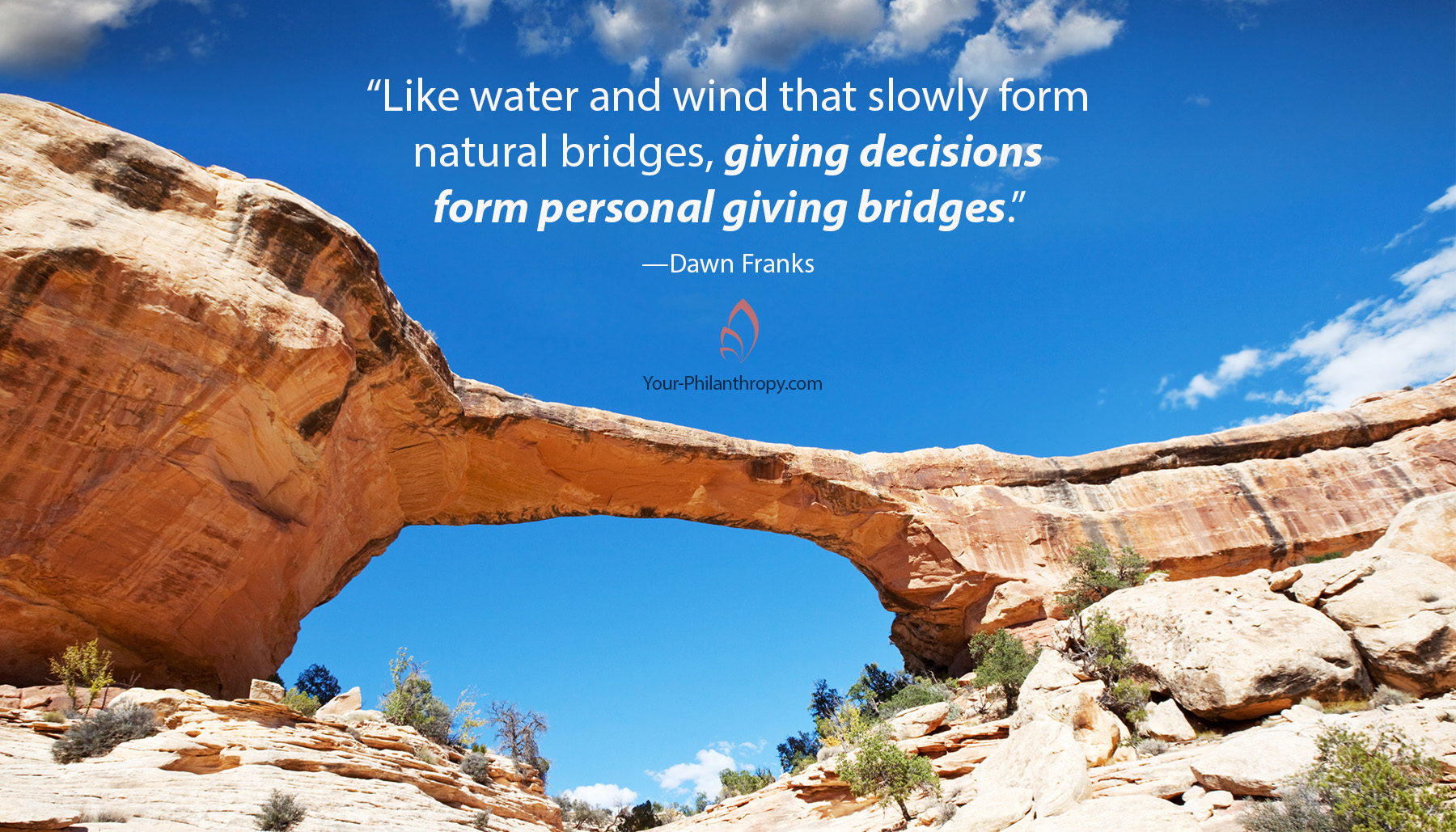My childhood memory of the Big Eddy Bridge, now under Lake Palestine, is not accurate. But the memory is real. My brother and I would convince my dad to drive over the old, rickety bridge every chance we got. Every board in the old wooden bridge slapped the tires as my dad slowly made his way across.
Sometimes he would stop right in the middle and debate whether to continue going on or back up to safety. Was he taking a chance, or was he confident the bridge would hold on this trip as it had for many years before?
Of course, I now realize he would never have started across the bridge if he hadn’t been sure we would get to the other side, but I wasn’t sure then and would hold my breath in expectation of something.
Something might have meant getting all the way across and taking a deep breath or backing up to give the trip more thought. Something was the unknown.
The View from Across the Bridge
I’ve experienced a similar feeling when making a gift to an organization. I want my gift to accomplish something specific – something on the other side of the bridge. I want to help in a certain way or fund a particular program, but I’m unsure how to make it happen. Is it even realistic?
I’m standing on one side of the bridge, trying to figure out how to get to the other side with my intentions and hopes intact.
Our lives are full of bridges, some hand-built, some formed by nature. The places we cannot go or things we cannot learn without bridges are endless, from the short Big Eddy Bridge of my childhood memories to very long bridges of every shape and form. Bridges span obstacles.
Did you know the longest suspension bridge spans 6,532 feet in Kobe, Japan? The longest continuous bridge over water is 23.87 miles in Lake Pontchartrain, Louisiana. The longest ice bridge is 68 miles in Beaufort Sea Road, Alaska, and the longest natural bridge spans 400 feet in Guangxi, China, known as the Fairy Bridge.
Every bridge is different in design and style, built or natural, and yet each cross over obstacles.
Philanthropy Bridges
Bridges in the world of philanthropy can be tools from simple and easy to highly technical. They include year-end check writing and monthly automated giving plans, donor-advised funds, family foundations and complex estate planning. In each case, the technical tools provide a bridge for the donor to accomplish goals.
Bridges You Build
Some giving bridges require advice and guidance. The advisors with expertise and specialized training on these tools help build solid bridges that last many generations.
Different kinds of advisors address different kinds of issues. Accountants, investment and financial advisors, estate attorneys, and philanthropy consultants all have different roles in building great giving bridges.
Bridges Formed Over Time
Natural bridges are of a different kind. They’re more like the Fairy Bridge in China, formed from limestone over many thousands of years. Similar bridges occur over time in philanthropy, learning to give intentionally, with expected impact or outcomes.
“Such bridges develop with giving decisions year after year, learning what worked, experiencing mistakes and disappointments, then giving again – but doing it differently.”
I especially like natural-giving bridges because each represents one person who formed them. Short or long, the learning process is personal. Like a trip across the Big Eddy Bridge – sometimes you stop in the middle to figure out whether you know enough to keep going or you must back up and reassess. Ask questions before you make the gift. Clarify with the organization your expectations.
Like water and wind that slowly form natural bridges, giving decisions form personal giving bridges. We make our way over obstacles, and eventually, we arrive on the other side.
One more thing, whether the bridge builds slowly or quickly, the temptation is to build alone, without guidance or input. Take time to process what you’ve learned from building your bridges with someone who understands giving and how it’s important to you. The simple act of talking about what you’ve learned and want to accomplish will make your giving better.
Like it? Use it. Share it. Comment below.


0 Comments